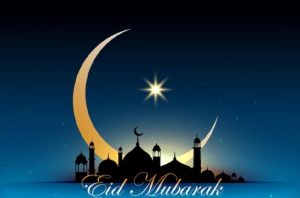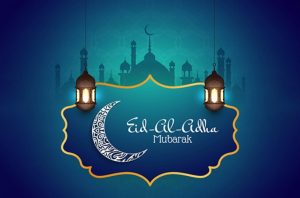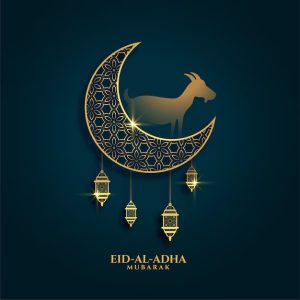
Eid is a term familiar to over a billion people around the globe. Synonymous with joy, feasting, and thanksgiving, the word ‘Eid’ in Arabic means ‘festival’ or ‘feast.’ In the Islamic context, there are two primary Eids: Eid al-Fitr and Eid al-Adha. Both are occasions of joy, prayers, and unity. Let’s delve deeper into the significance, traditions, and customs associated with these festivals.
Also Read: Understanding Ramadan: The Holy Month of Fasting and Reflection
[ez-toc]
Eid al-Fitr: The Festival of Breaking the Fast

What is Eid al-Fitr? Eid al-Fitr, often just referred to as Eid, comes at the end of Ramadan, the holy month of fasting. It’s a celebration marking the end of a month of discipline, reflection, and spiritual growth.
When is Eid al-Fitr 2024?
Eid al-Fitr for the year 2024 is celebrated/observed on sundown of Tuesday, April 9th, ending at sundown on Wednesday, April 10th
Key Traditions:
- Prayers: Muslims gather in mosques or open fields, known as ‘Eidgahs,’ for a special prayer service. This is usually held in the morning.
- Zakat al-Fitr: Before the Eid prayer, Muslims are required to give a specific type of charity called Zakat al-Fitr. This ensures that even the less fortunate can join in the celebrations.
- Feasting: After a month of fasting, Eid is marked by grand meals, often starting with a breakfast of sweet dishes in many cultures.
- Dressing Up: It’s customary to wear new clothes, often the finest ones, for the Eid prayers and celebrations.
Eid al-Adha: The Festival of Sacrifice

What is Eid Al Adha? According to Islamic tradition, Eid al-Adha is observed about two months after Eid al-Fitr. It coincides with the Hajj pilgrimage and commemorates the willingness of Prophet Ibrahim (Abraham in Judeo-Christian traditions) to sacrifice his son in obedience to God’s command. However, God provided a ram to sacrifice instead.
When is Eid al-Adha 2024?
Eid al-Adha for the year 2024 is celebrated/observed on sundown of Sunday, June 16th, ending at sundown on Monday, June 17th
Key Traditions:
- Sacrifice (Qurbani): Those who can afford to do so perform the act of Qurbani, which involves sacrificing an animal like a sheep, cow, or goat. The meat is then distributed among family, friends, and the less fortunate.
- Prayers: Like Eid al-Fitr, this Eid also starts with a special prayer service.
- Feasting: Meals during Eid al-Adha are centered around the meat from the sacrificed animal. Different cultures have unique dishes and traditions for this feast.
Common Customs Across Both Eids
- Gifting: It’s customary to give gifts, especially to children. This can range from money (often referred to as ‘Eidi’) to toys, clothes, and other presents.
- Visiting Relatives: Families come together to celebrate, often visiting the homes of relatives and neighbors.
- Sweets: Both Eids are marked by the preparation and distribution of various sweet dishes. From the baklava of the Middle East to the sheer kurma of South Asia, sweets are an integral part of Eid celebrations.
The Universal Message of Eid
Beyond the feasting and festivities, Eid carries a universal message:
- Gratitude: Both Eids teach the importance of being thankful for God’s blessings.
- Generosity: Through Zakat and Qurbani, Muslims are reminded of the importance of sharing their blessings with those less fortunate.
- Unity: Eid is a communal celebration, emphasizing unity, brotherhood, and the breaking down of barriers.
Conclusion
Eid, in both its forms, is a time of joy, reflection, and unity. It encapsulates the spirit of community, the importance of charity, and the joy of celebration. Whether you’re celebrating yourself or simply extending wishes to your Muslim friends, understanding the essence of Eid helps bridge cultural gaps and fosters a spirit of global unity.